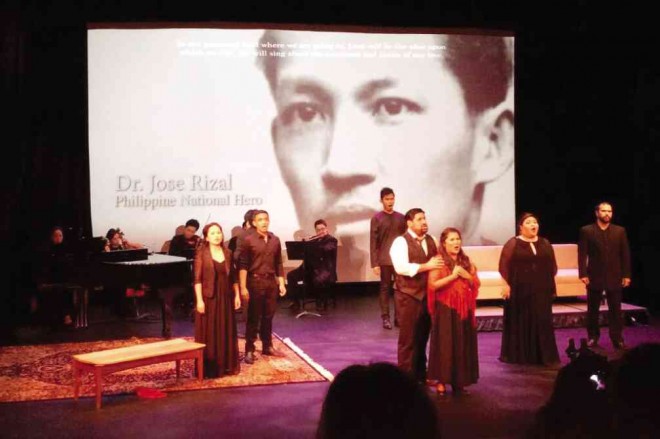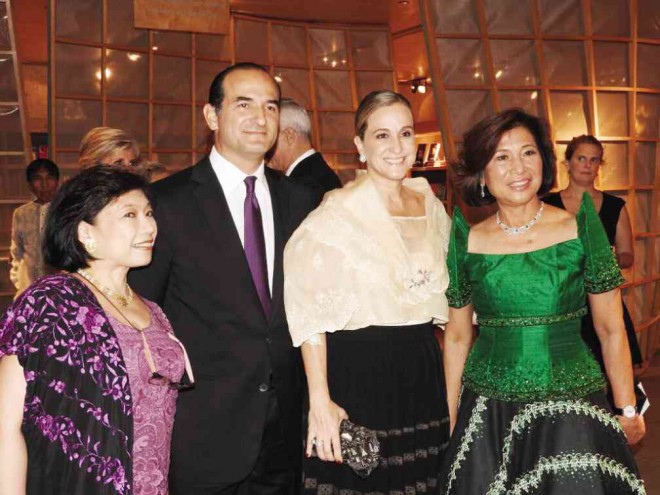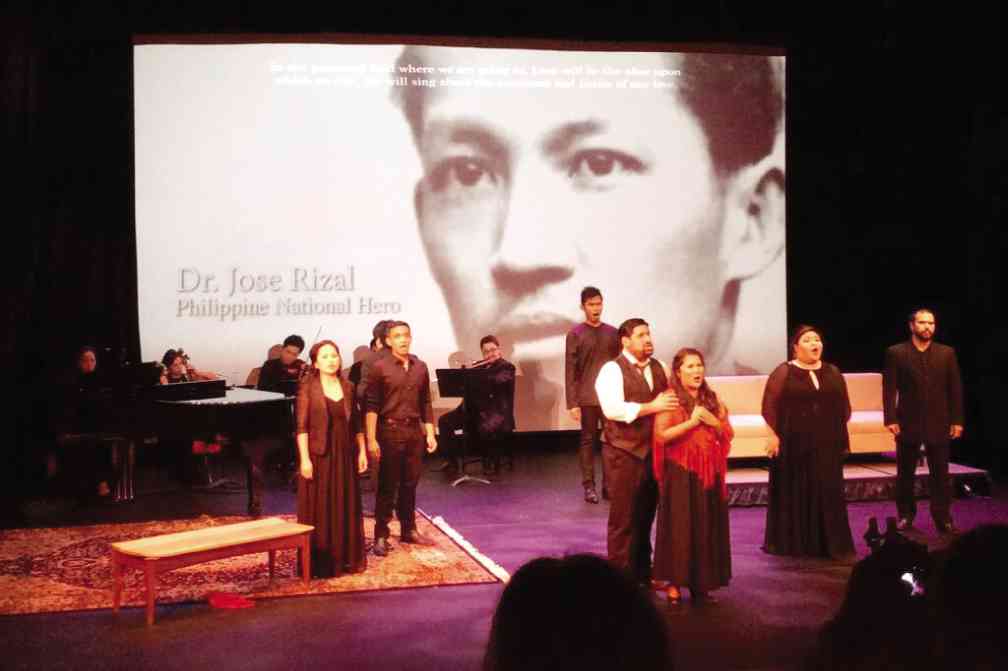
IN AN EVENT-FILLED week that included the Pope’s visit to the US and the opening of the UN General Assembly, the exhibit “Philippine Gold: Treasures of Forgotten Kingdoms” opened at the Asia Society in New York last Sept. 11 and runs till Jan. 3, 2016.
This is the first time that the choice selection of 120 pieces from the Ayala Museum and the Bangko Sentral ng Pilipinas, including precious items from private collections, has traveled outside the country for a major exhibition.
Archaeologist and art historian John Miksic has remarked that the Ayala Museum’s gold collection is “perhaps the country’s greatest tangible cultural asset and can stand comparison with any other assemblage of gold artifacts in the world.”
The gold artifacts amply demonstrate the dazzling sophistication and cunning artistry of “forgotten kingdoms” in pre-Hispanic Philippines around the 10th to 13th centuries, long before the arrival of the Spanish in 1521.
The Ayala hoard is united in this particular exhibit with equally spectacular pieces from the Central Bank collection and supplemented by contributions from the Metropolitan Museum of Art, the Locsin collection, the Indiana Museum Lilly Library, and Musée du quai Branly.
It is often forgotten that the Philippines has the world’s second largest gold deposits. Before the discovery of the so-called Surigao Treasure in 1981, not many knew that the islands had been producing gold products of the highest quality for ritual and ornamentation over the centuries.
This astonished even the Spanish explorers who, fresh from their conquest of Latin America with its own fabulous gold treasures, arrived in these islands in the 16th century. This is recorded in the Boxer Codex, which depicts the island inhabitants in their gilded finery.
Dating back to around 1590, this unique manuscript, itself richly embellished with gold leaf, is thought to have been created for possibly a notable personality, such as the Spanish Governor-General Gomez Perez Dasmariñas or his son Luis.
It was purchased in 1947 by professor J.C. Boxer of the University of London and donated to the Lilly Library of the University of Indiana in Bloomington. It is known by most Filipinos only through reprints in books or photo blowups in exhibitions.
Now the University of Indiana Lilly Library has generously allowed the international public to view the fascinating pictures of Filipino ancestors wearing the objects displayed in the Philippine gold exhibit.
Ideal partner
The exhibit was conceived and assembled within a year’s time but is no less breathtaking; normally, a two-to-three-year lead time is needed for exhibits of this caliber.
It took the collaboration and cooperation of the Asia Society, the Ayala Museum, and the Central Bank of the Philippines, as well as such individuals as Fernando Zobel, Doris Magsaysay-Ho and Loida Nicolas Lewis, to bring the project to fruition.
“The Asia Society is an institution that we have known and worked with over many years,” said Zobel. “We felt they would be an ideal partner for this project. I talked to Doris Ho, who heads Asia Society Philippines. She was very excited about the idea and immediately contacted New York. The senior leadership in the Asia Society New York welcomed the opportunity to partner with us to exhibit this collection.”
The significance of the exhibit cannot be overestimated, since it highlights aspects of Philippine culture hitherto unknown or ignored.
It now brings to international attention—as did the Musée du quai Branly exhibit in Paris in 2013—the existence of a vibrant pre-Hispanic culture extant in what would become the Philippines, and firmly within the cultural ambit and trade route circuits of China and India, as well as its neighboring Southeast Asian countries.
It pushes back these dates to half a millennium earlier, before the Europeans set foot on Philippine soil. It also sets right the dubious notion that there was little contact or exchange between Asia and the Philippines in pre-Hispanic times (or, as Nick Joaquin put it, that Asia had snubbed us); that even with such contact, the pre-Hispanic Filipinos had failed to develop an indigenous high culture of their own; or, most egregiously, that it was mainly the Spanish who introduced technology or sophistication to the islands.
This recognition has now been translated into newfound attention to the Philippines, which had not been featured in major museums focusing on Asia or even Southeast Asia, since its Hispanic culture did not seem to place it among its neighbors.

Cultural find
The discovery of the Surigao Treasure on April 27, 1981, illustrates how such an important cultural find could begin with mundane events and ordinary people, who would play a decisive role in the survival of a national treasure.
Heavy machinery driver Edilberto “Berto” Morales was digging up soil for an irrigation project in Magroyong, San Miguel in Surigao del Sur when his scraper hit a metallic object that a coworker thought would damage his machine. It was the first of many gold objects that, by the end of that day, would total about 22 kilograms or 10 pounds.
This would naturally spur a treasure hunt that brought many seekers to the vicinity, and the loss of precious objects as well as important archaeological data.
Fortunately, this particular hoard survived generally intact and landed in safe hands to become the core of the Locsin collection and the permanent gold exhibit of the Ayala Museum, as well as supplement that of the Central Bank collection.
Event highlights
The New York exhibition opened with a gala dinner on Sept. 11 under the aegis of the Philippine Gold Benefit Committee of Nicolas-Lewis, Magsaysay-Ho and Zobel.
The gala was followed on successive days by a Filipino-American benefit event (featuring a radio spiel with Filipino songs and an announcer played with aplomb by stage and film actress Madeleine Nicolas), and an appealing rondalla performance billed as “Tunog ng Ulap” conducted by maestro Michael Dadap.
Other event highlights were a lecture on “Encounters with Early Asian Gold” by Florina H. Capistrano-Baker, consulting curator of the Ayala Museum; “Alamat: Stories of Philippine Gold,” a theater piece by the Ma-Yi Theater Company retracing the evolution of Philippine gold as uniquely Filipino; Grace Nono and an ensemble performing “Voicing the Ancestral Sacred,” with Nono’s distinct sound clearly influenced by Butuan and Mindanao from where she hails; Philippine state-of-the-art crafts and fashion explained by such exponents as Federico de Vera; a Philippine food bar featured in the Asia Society’s restaurant; and a Filipino film series that showcased, among others, Brillante Mendoza’s “Thy Womb,” Loy Arcenas’ “REquieme!,” Isabel Sandoval’s “Apparition” and Erik Matti’s “On the Job.”
The exhibition itself was noted by the New York Times (“gorgeous and historically intriguing,” it said, and the pre-Hispanic Filipinos “astoundingly skillful goldsmiths”), the New Yorker (“a fantastic exhibition”) and various other media in the metropolitan area and all the way to California.
Precious metal
The overall motif of the exhibition was taken from a vessel in the form of a kinnari—a female half-bird, half-human icon derived from Hindu mythology who personified beauty, grace and accomplishment—which was part of the Surigao Treasure.
While the bulk of the exhibition was from northeastern Mindanao, there were representative pieces as well from Eastern Visayas, Camarines, Palawan, Mindoro and Laguna, showing that the development of gold was evenly spread throughout the archipelago.
That this was an indigenous industry, and that the products were not simply the result of trade, are evidenced by the discovery, alongside the gold objects, of paraphernalia for manufacturing such as metal tools, molds and crucibles, as well as gold scraps left over from manufacture.
Scales and balances displayed in the exhibit illustrate the value attributed by the people to the gold ornaments, while pieces of ceramic unearthed with them both date the objects as well as define the trade ties of Butuan with China.
The accompanying book, authored by Capistrano-Baker and published by Asia Society, further illuminates the public on the significance of gold in pre-Hispanic Philippine society.
The vocabulary of the natives then, as recorded by the Spanish friars, showed how this precious metal permeated the daily lives of the people.
The highest gold standard, “Dalisay,” now survives only as an adjective and as a woman’s name.
According to John Guy in “Arts of Asia”: “What distinguishes the Philippine gold working tradition is that it displays a level of refinement matched only by the Kingdom of Java. Only the Javanese goldsmiths rivaled their Philippine counterparts in the use of complex construction and the combining of multiple techniques in both fabrication and ornamentation.”
Outstanding pieces
Although it would be hard to single out the most outstanding pieces among the gold necklaces and earrings, chains, rings, belts, bracelets, ritual bowls and ceremonial weapons, mention should be made of the iconic kinnara; the sashes with segmented tubular beads and finely granulated buckles; the chastity covers for women; the funerary masks and diadems; and the artfully displayed kamagi (or long string of different gold beads, or kwintas).
Last but not the least, there is the sash or caste cord, which weighs at least nine pounds (or half the Surigao treasure) and was said to have had a gem at its end, which would vanish after discovery.
Motifs identified in the gold objects point toward influences from China and India, as well as Borneo and Java.
Crown jewel
In a banner year that has witnessed such parallel events in New York City as the premiere of the film “Heneral Luna,” the presentation of Cayabyab and Cuyugan-Asencio’s opera “Spoliarium,” a marathon reading of Jose Rizal’s novel “Noli Me Tangere” in the Bowery Poetry Society, the performance of Lea Salonga in the Broadway musical “Allegiance,” a lecture on English in the Philippines by Vicente Rafael at Barnard College, the book launch of Luis Francia’s latest oeuvre at the Asian-American Writers’ Society, and, not least, the acclaim that has met Filipino prima ballerina Stella Abrera in American Ballet Theatre’s new season offering, the Philippine gold exhibit may be said to be the crown jewel of the extraordinary international attention that the Philippines has received of late.









































